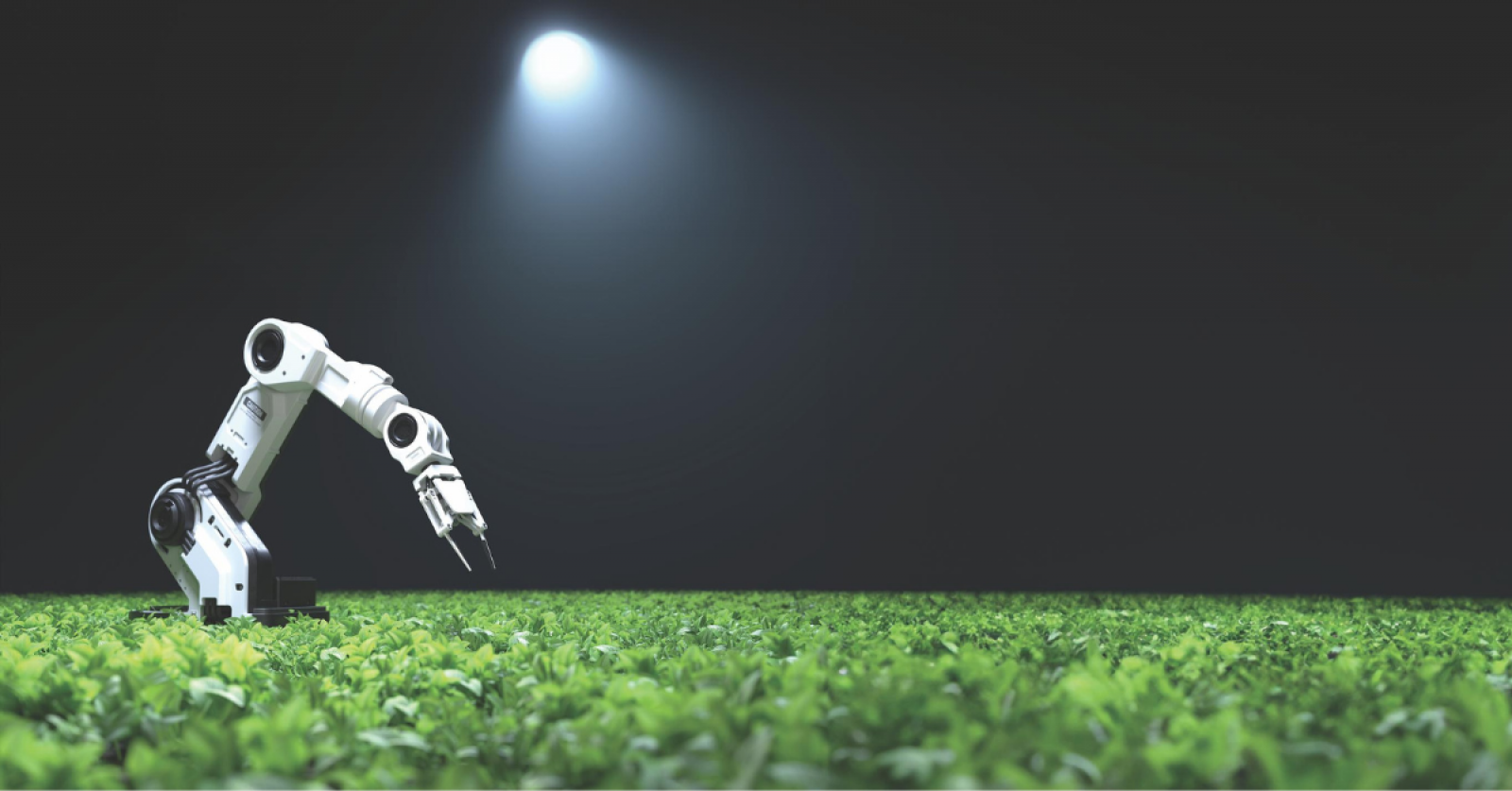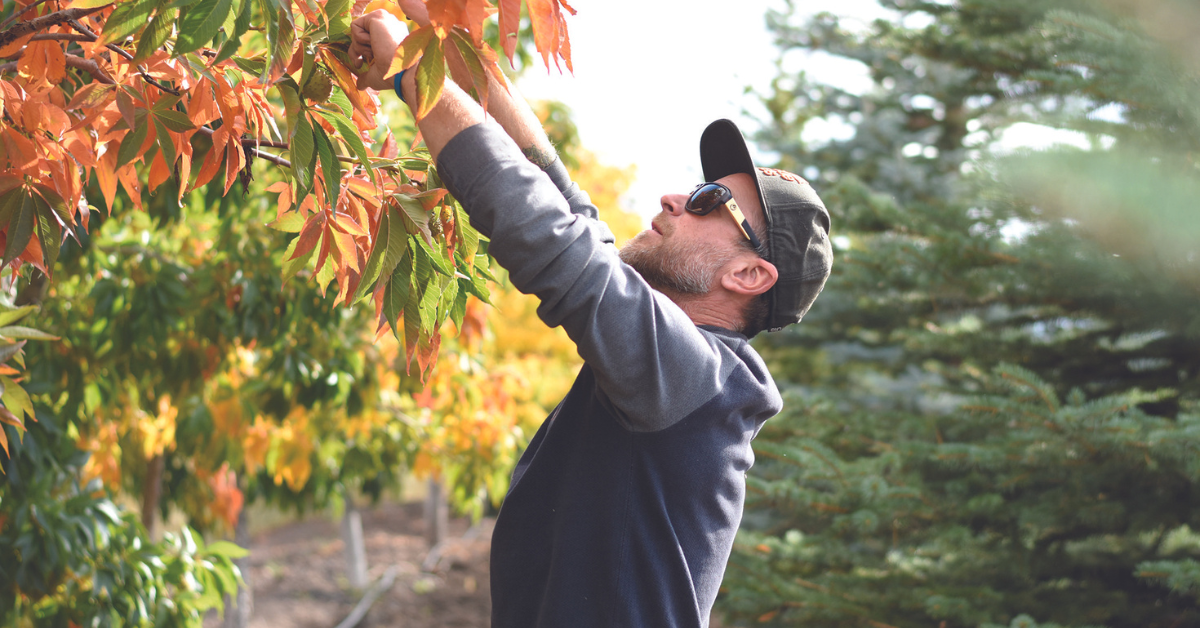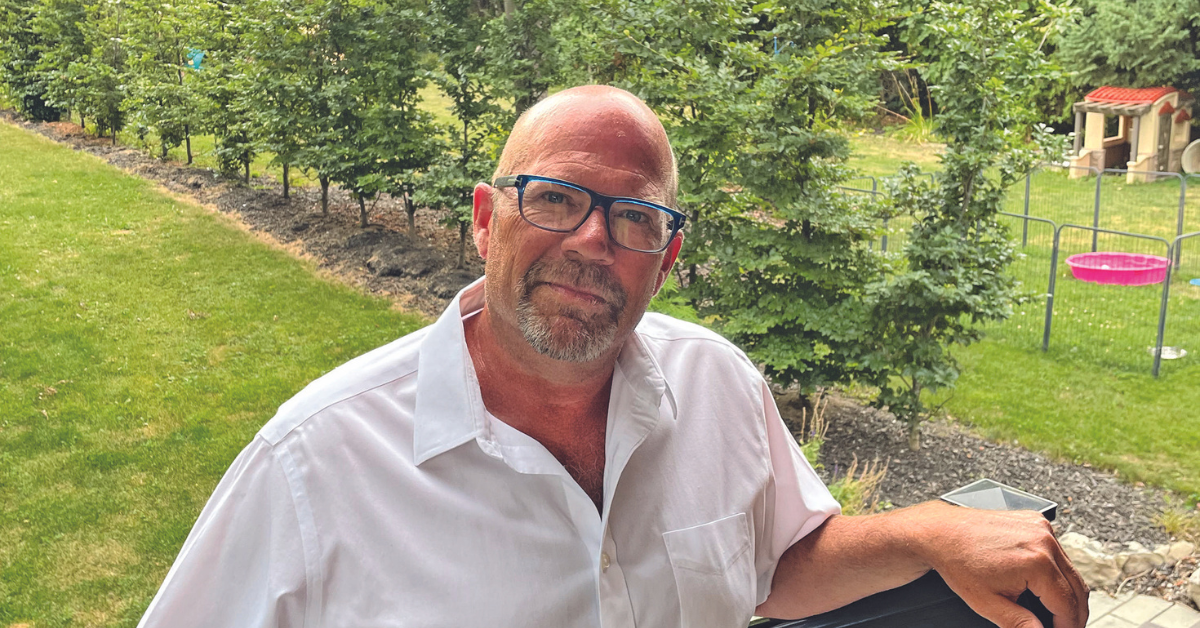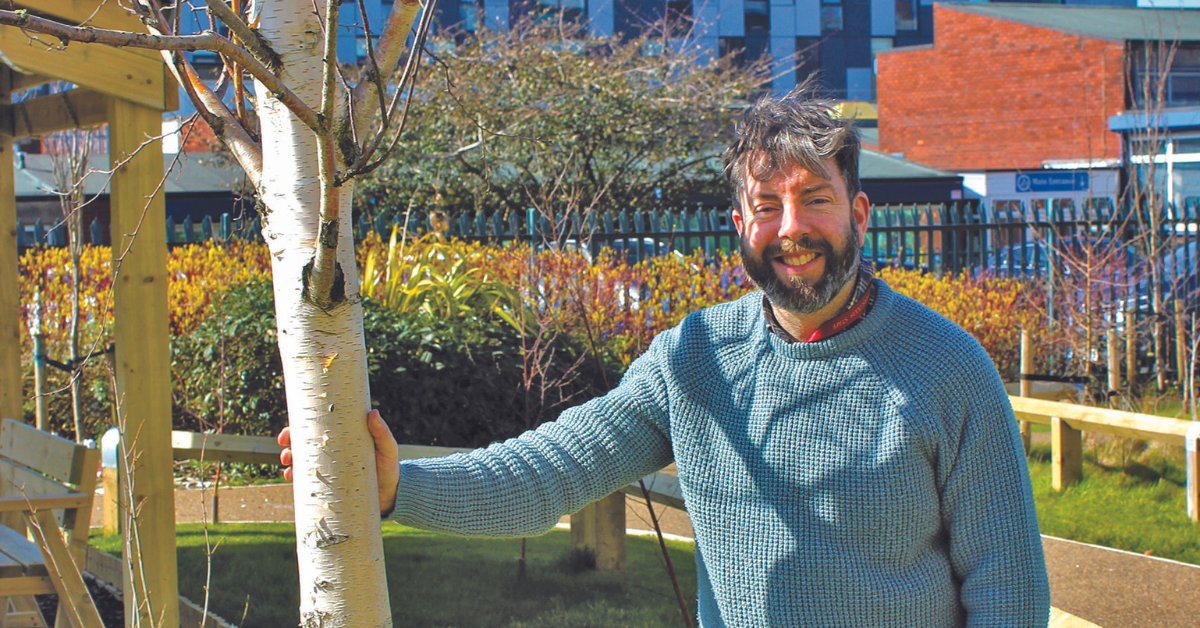March 14, 2024

Cultivating tomorrow
The AI revolution in nursery growing
BY KARINA SINCLAIR
If you mention Artificial Intelligence (AI) in conversation, you’ll likely be met with a full range of responses, from wariness to wonder.
To many, the concept of AI may be as far-fetched as time travel, living in space and driverless cars. Once the purview of sci-fi, many of these futuristic concepts have become reality. The International Space Station has accommodated astronauts since 1998. And autonomous vehicles are on the brink of social acceptance. In fact, some AI technology has already been successfully implemented for robotic lawn mowers and even airport snow clearing efforts.
From water and waste reduction, to predictive models for risk mitigation, to labour issues: in this feature, we'll explore just a few of the ways AI is being applied to horticulture and nursery grower operations.
What IS AI?
Artificial intelligence is not actually all that new. Famous WW2 code-breaker Alan Turing, the “father of computer science,” published his seminal work “Computing Machinery and Intelligence” in 1950. Even then, the computer scientist proposed that machines could eventually think for themselves. So why all the fuss about AI now?
Enter ChatGPT — it’s not the only AI tool out there but it has received a lot of attention in the media since a free version became publicly available in November 2022. ChatGPT is a language model tool that has been trained on a vast amount of input data, largely scraped from the Internet (think of all those questions and answers posted online). It then combs through that data to generate human-like responses. It’s available for anyone to use, and thanks to “machine learning,” the tool is getting more sophisticated as more people use it because it’s analyzing how people use it. Since ChatGPT is supposedly so smart, I prompted it to define AI.
Here’s what it said:
“AI refers to the simulation of human intelligence in machines that are programmed to think and learn like humans. The goal of AI is to create systems that can perform tasks that typically require human intelligence, such as visual perception, speech recognition, decision-making and language translation. While AI offers numerous benefits in decisionmaking, human judgment and oversight are crucial to validate AI-generated insights and decisions... ”
ChatGPT is just one example — there are plenty of other applications for all kinds of tasks. If you’ve used digital map navigation, search engines, social media or online banking, you’ve already interacted with AI.
Dr. Brian Lynch, director of Horticulture Technology Systems at Vineland Research and Innovation Centre in Ontario.
AI and horticulture
What does all this have to do with horticulture? Plenty. Companies like Moasure, Deep Lawn and Attentive offer AI-driven solutions designed for landscape professionals, which streamline administrative tasks such as measuring properties, creating estimates and sales automation.
AI solutions are also being developed for field operations. Dr. Brian Lynch, director of Horticulture Technology Systems at Vineland Reseach and Innovation Centre in Ontario, says using artificial intelligence is a great way to help robots and machines learn new environments and manage large volumes of data for decision-making in a horticulture setting.
Dr. Lynch is an expert in robotics, data science and artificial intelligence machine learning. He leads a team of R&D engineers and technicians to test and optimize technology for the horticultural industry. As third-party validators, Dr. Lynch and his team are privy to emerging AI solutions and says more are coming to help growers and greenhouse operators with manual labour.
He described an experiment conducted at Vineland where researchers had to measure the angle of leaves on new plants. The R&D team explored the idea of a camera and AI system that would allow them to automate those measurements. Dr. Lynch asked his researchers if they worried that such a system would affect their job. “They immediately said, ‘Are you kidding me? I can only do 20 measurements a day when I have to pull out my ruler. If a camera can help, I can do 600 per day.’ So their job doesn’t actually change in the sense of them being useful,” Dr. Lynch said. “It just means they can do more with their time and the high tech tools just make life easier.”
Colin Upson, field manager at Foothills Tree Nursery near Calgary, Alta.
Man vs. machine...or is it?
If a machine can learn to do human tasks, where do said humans fit in? Professionals possessing knowledge passed down and perfected with hands-on experience might be wondering how a machine powered by AI could learn the nuance of what they do.
Colin Upson, the field manager at Foothills Tree Nursery (FHN) near Calgary, Alta., is curious about the promise of AI, but acknowledges he doesn’t see AI as capable of performing more complex tasks at this time. “I would feel comfortable and can see the benefits of using AI with certain tasks, such as potting plugs or re-potting,” Upson said. “I would still like the actual planting part done by trained people. This is a very important stage of a plant's life, especially recognizing things like girdling roots and how to remove them properly.”
According to Upson, FHN is working with the Southern Alberta Institute of Technology on a project that involves using drones to measure the height of the conifer trees on their 450-acre nursery, but other tasks, like pruning, will continue to benefit from a human touch. “This is a very specialized skill in my mind. When we receive a shipment of bare root trees, we break apart every bundle, inspect for quality, prune and prepare them the best we can for planting. We do this with roughly 10,000 trees a year,” Upson said. “By being so hands-on with every tree or shrub we grow, it helps increase the knowledge of the people working here, and gives them a sense of ownership.
Data-based decisions
“The database required to prune effectively would have to be astronomical. Things like bud arrangement, whether its opposite or alternate arrangement, are very important when deciding where to make a cut. Branch attachment is another thing that requires a certain level of judgement," Upson said. "Sometimes you make these [pruning] calls based on the tree's history; for example, was it a good growing year or did the tree struggle? As a field manager or owner of a tree farm, the trees almost become like your children or a part of your family.”
Jeff Olsen, CEO of Brookdale Treeland Nurseries (BTN) in Ontario and British Columbia, is very excited by what AI can do to better serve clients and manage inventory.
“When supplying retailers, you're renting shelf space. You're not just making a sale, you have to own that space and manage it. You can only do that with data,” Olsen said. “If you're dealing with a national retailer that has 500 locations, and you sell them 20 products per day, that would be 10,000 lines of information that you would need to slice and dice in order to forecast for the next day and week, and then for a week you have 70,000 lines of information that you either need to hire analysts or have a tool that takes the data, analyzes it, forecasts for you and tells you what your orders should be in order to maximize your opportunity. So that's the sort of thing I'm really excited about. AI, machine learning, Big Data coming in and saying ‘I can take these 70,000 lines of information and tell you what you need to do.’”
Using AI to process all of that data could also help reduce waste, something Olsen considers a big win. “Typically, we throw out about 30 per cent of our product, either at retail or at the grower site. Imagine how deflating it is for growers to have a big garbage pile that didn’t sell because we forecasted incorrectly?” Olsen said. “If AI can eliminate any part of that, it's only going to add profit to the business.”
How would AI do that? By analyzing the big picture, including historical sales data, consumer buying habits, retail locations and even the weather. “If I know I sell 50 per cent more of something on a sunny Saturday in May than I do on a rainy Saturday in May, and I also know that this Saturday is going to be sunny and that one's gonna be rainy, I can control my inventory flow based on those factors,” Olsen said. “I may be able to do that manually and through intuition, but can I repeat that for 500 SKUs over 500 stores? My brain melts at that point. You can do it manually but AI really simplifies this process.”
Jeff Olsen, president and CEO of Brookdale Treeland Nurseries in Ontario and British Columbia.
Predictive model-making
AI can also help reduce water usage. Dr. Andrew Hirons is a senior lecturer in arboriculture at Myerscough College in the U.K., where he leads a plant sciences research team. His work has focused on tree selection for urban forests and supporting development guides to help select trees for different urban scenarios, particularly in relation to drought tolerance. His goal is to better understand the water use of nursery trees more effectively by gathering data with Internet of Things (IoT) sensors.
Dr. Hirons pointed to the lofty “million tree” planting policies that governments implement and how nurseries growing young trees destined for those initiatives require a great deal of water. Getting the permits to acquire more water is difficult and expensive. “Clearly, water use management is going to need to change over the coming decades because there's more pressure on the water that's available for irrigation. That's only going to get worse as there’s also pressure to expand production to meet policy requirements,” said Dr. Hirons.
“From a business point of view, if you're at your maximum capacity and subject to the irrigation using current techniques, then you can't really grow as a business because you're limited by that resource,” Dr. Hirons said. “Whereas if you could make fundamental savings of ten or 20 per cent, then the same volume of water can be deployed to a large number of plants.”
To test this theory, Dr. Hirons has experimented with installing IoT sensors at Hillier Nurseries — the largest tree and shrub nursery in the UK — to monitor and collect data on soil moisture, air temperature, tree growth rates, nutrient levels, sap flow and moisture uptake. This data stream isn’t technically artificial intelligence, but Dr. Hirons says it will provide the architecture for integrating AI into those decision-making processes by deploying predictive models.
“Once we've got that model, we can say, ‘well, what does it look like under the scenario where temperatures are two degrees warmer? What does that do to our water use?’” Dr. Hirons explained. “By stress testing different scenarios, the data might really help a grower make strategic investments.”
Even with all that data, Dr. Hirons says it's better to have a human somewhere in the decision-making chain, even if it's to say ‘I support that decision that the AI's coming up with.’
“Certainly the growers who are relying on the successful growth of plants are probably going to be extremely reluctant to hand over that decision-making process. The logical next stage is to get some real time feedback on how much the crops are using water, but to still have that human in the loop who can help clarify or override the decision suggested by AI.”
The Vineland team also worked on an irrigation project and findings revealed that growers tend to be over-reactive. “The common theme is that growers overwater because it's a little bit better to be overwatering than underwatering. We know that in the application of anything: water, irrigation, spraying for pests, even the amount of fertilizer being used, people typically use more than they should,” Dr. Lynch said. “So AI can help objectively decide the right amount to use at the right time and it can be programmed to take more risks or take fewer risks depending on our growers’ preference. They'll see it objectively.”
Dr. Lynch says AI also applies the learned expertise of a grower and lets the software follow a set of rules. “These AI systems are learning from data that’s available. It’s learning from the way people have done things, but it’s also learning from things that are too much to process. People can’t necessarily consider every single plant individually. But AI can.”
Dr. Andrew Hirons, senior lecturer in arboriculture at Myerscough College in the UK.
The changing talent pool
The technology still relies on humans to design, implement and manage the AI systems.
“It’s probably going to be 100 years before you have a greenhouse that no one really ever sets foot in and everything is just an automatic shipment. The domain of knowledge is always going to be really important. If I'm a grower or have a greenhouse or orchard, maybe I need to have a person on staff who can basically speak to the robots, or be the AI whisperer.”
Oslen said he already employs a team of brilliant computer scientists in their 20s working on in-house solutions for data modelling.
Olsen also thinks AI could also be used to address the labour shortage. It’s not like people are clamoring over themselves to work in the nursery or the greenhouse business as labourers,” Olsen said.
He encourages his peers to consider the workforce of the future. “Most of the people we're hiring today as entry level start at our company with a university degree. It is rare that people even apply for general labour positions. Entry-level horticulture is going to be more science-based. Twenty years ago, we hired kids to come in and pull weeds. That's not going to be there in the future, and that's okay because that's a crappy job. And that turned people off from the business. So if a machine can do it, you're basically replacing labour that you really couldn't find any way.”
Dr. Hirons feels the successful adoption of AI will require people with a wide range of skills and knowledge. “A data scientist wouldn't necessarily have horticulture knowledge that they could use to turn that raw data into something actionable. It absolutely would need collaborative and interdisciplinary teams because the goal that we're working towards doesn't just involve growers or biologists or mathematicians or software engineers. It involves all of those people,” Dr. Hirons said. “For sure, there's going to be changing roles, and I think in the future there will be data specialists who just work in the green industries. There will be new, interesting opportunities that don't exist now.”
Looking ahead
Using AI is a choice, and plenty have reservations about trusting an intangible system with access to so much data. “I’m sure you can find growers who say “I don’t trust it, it makes me feel like I’m not needed anymore,” Dr. Lynch said. “But my conversations with growers reveal they care about the bottom line. They care about their business and, by association, how that affects their quality of life and the life of their staff. And if a piece of technology helps them get there and it has the return on investment, then they'll go in that direction.”
Dr. Hirons encourages people to be open to the possibilities AI offers. “Be brave and look to embrace the opportunity that it gives us rather than and say, ‘Well, what we've been doing for the last 40 years is going to be sufficient for the future.’ We need to apply much more foresight.”
The adoption of AI in nursery growing is not just a technological shift; it's a cultural transformation. Growers of tomorrow might become cyber stewards, using automation and artificial intelligence to streamline tasks people don’t want to do, and create new ways of working to engage an entirely different talent pool. In the not so distant future, professionals in this sector will need to decide how they’ll evolve to harmonize innovation and tradition in a digital landscape that is no longer in the realm of fiction.
Have you implemented AI in your operations? We’d love to hear about it. Share your story with editor@landscapetrades.com.



